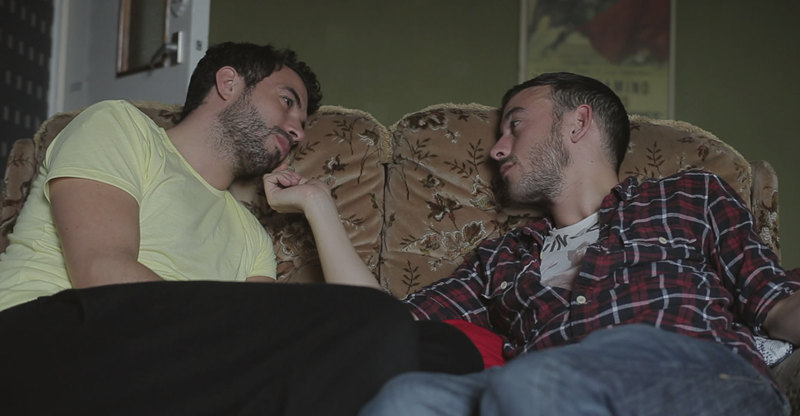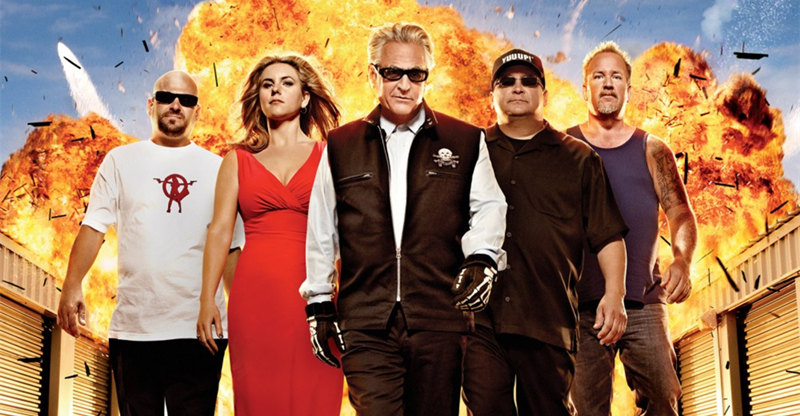This time it’s CBS’s turn to release “My Fair Lady,” turning it out in high-definition Blu-ray picture and sound. It’s the least they could do for one of the world’s best musicals ever, even if they might have transferred the audio and video a little better. More on that in a minute.
“My Fair Lady” is, of course, one of the finest, most-popular stage musicals of all time. It has what so many other musicals do not have–an intelligent script, great acting, clever dialogue, and an endless stream of memorable tunes. The film won eight Oscars in 1964 for Best Picture (Jack L. Warner), Best Actor (Rex Harrison), Best Director (George Cukor), Best Art Direction (Gene Allen, Cecil Beaton, George James Hopkins), Best Cinematography (Harry Stradling, Sr.), Best Costume Design (Cecil Beaton), Best Music (Andre Previn), and Best Sound (George Groves). No self-respecting film library can be without a selection of musicals, and no selection of musicals should be without “My Fair Lady.”
Alan Jay Lerner and Frederick Loewe based the story on George Bernard Shaw’s popular 1913 stage play “Pygmalion,” which Shaw in turn had based on the classical myth about the sculptor who fell in with the statue of a maiden he created, brought to life by the goddess Aphrodite. The musical stage play was an instant success on Broadway in 1956, coming to the screen in 1964 under producer Jack L. Warner and director George Cukor.
The plot centers on the idea that the way things appear is not always the way they are; or, conversely, if you can change the way things appear, it makes them the way they are. In the story it is phonetics professor Henry Higgens’ proposal that he can take any lower-class citizen off the streets of London and pass him or her off as a cultured gentleman or lady simply by teaching the person to speak properly. Of course, it was Shaw’s satiric dig at society that we judge people on how they look and sound, not on who they really are. The object of the professor’s interest in this pursuit becomes Eliza Doolittle, a poor, largely uneducated flower girl. Taking her under his wing, he makes a bet with his friend and colleague, Col. Hugh Pickering, that he can successfully introduce her into high society within six months. Needless to say, Eliza winds up teaching Professor Higgens as much about life and about himself as he teaches her about how to be a proper lady. The story is endlessly engaging and has as much appeal today as it did when Shaw first conceived it.
Rex Harrison reprises his stage role as Higgens, the part for which fans will forever remember him. Harrison was already an established star when he accepted the role in the musical, and it is one he seemed born to play. When Warner Bros. initially asked Cary Grant to do the movie role, Grant turned it down, saying if Harrison didn’t get the part, he’d never do another film for Warners. Harrison is so convincing one would think he were the Professor in real life. I rather expect his fans thought he was, too. Shaw’s play leaves the final relationship of the Professor and the flower girl ambiguous, but the musical is more romantic and hints at something more serious. It is a tribute to Harrison that audiences hardly notice the age difference between the two characters, although the twenty-one-year span is almost exactly what Shaw had in mind. Higgens’s most notable songs are “Why Can’t the English?,” “I’m an Ordinary Man,” “The Rain in Spain,” and “I’ve Grown Accustomed to Her Face.”
The part of Miss Doolittle went to Audry Hepburn, and therein lies the movie’s major point of contention. Julie Andrews had made the role her own on Broadway and record albums, and for audiences who had seen or heard her, it was inconceivable that anyone else should get the part. But the studio felt otherwise, unconvinced that Ms. Andrews had the necessary drawing power they thought the film needed and also a little wary of Ms. Andrew’s photogenic qualities. So they went with what they considered a sure thing in superstar Audry Hepburn, causing not a little bitterness on the part of theatergoers everywhere. Meanwhile, Ms. Andrews went on to do “Mary Poppins” and “The Sound of Music” in the next year and half; and while the Academy didn’t even nominate Ms. Hepburn for “My Fair Lady,” they gave Ms. Andrews the Best Actress Oscar for “Poppins.”
None of which is to suggest that Ms. Hepburn’s portrayal of Eliza is anything but delightful and charming. Yet the controversy was not to end there. In spite of Ms. Hepburn’s insistence that she do her own singing, Warners dubbed her voice by uncredited singer Marni Nixon, who had previously done the singing dubs in the movie versions of “West Side Story” and “The King and I.” Again the studio got its way, and again there was a degree of bitterness involved, this time on the part of Ms. Hepburn, whom the studio had apparently assured could do the vocals and for which she had even rehearsed and filmed several. But it’s all history now, and we will never know what more Ms. Andrews might have done with the role or, except for two songs mentioned below, what Ms. Hepburn might have done with the rest of the singing. Eliza’s most celebrated songs include “Wouldn’t It Be Loverly,” “Just You Wait,” “I Could Have Danced All Night,” and “Without You,” among others.
The indefatigable Stanley Holloway plays Eliza’s father, a role he did on Broadway, and he all but steals the show with his two cockney music-hall numbers, “With a Little Bit of Luck” and “Get Me to the Church on Time.” In other notable parts, fans of English television’s Sherlock Holmes will be tickled to see the late Jeremy Brett playing Eliza’s young, lovesick, high-society admirer, Freddy Eynsford-Hill, and singing “On the Street Where You Live” (uncredited singing voice courtesy of Bill Shirley). Wilfrid Hyde-White plays Col. Pickering; Gladys Cooper plays the Professor’s mother; and Theodore Bikel plays the deliciously unctuous Zoltan Karpathy (“Oozing charm from every pore, He oiled his way around the floor”).
The songs, cast, dialogue, direction, costumes, and set designs combine to make “My Fair Lady” one of the all-time great movie musicals in Hollywood history.
Video:
On high-definition Blu-ray the CBS video engineers present the film in a Super Panavision 70 ratio of 2.35:1 using a double-layer BD50 and an MPEG-4/AVC codec. The 1994 restoration looks good, with colors as beautiful as ever, even deeper and richer in high def. The brightest colors and the black-and-white contrasts in scenes like the Embassy Ball and the Ascot Races are, indeed, spectacular, and definition is sharper than on the old DVD’s.
However, this is not to suggest that the transfer is without its distracting flaws. There are some occasional minor white flecks and specks that appear in almost every scene. Worse, there are what appear to be exposure issues, fading, in the lower, side edges of the screen, particularly the lower-right corner, that intensify as the film goes on and by the second half look as though someone were shining a light on the image. For so important a Blu-ray release, I would have expected CBS/Paramount to have perhaps worked harder on the encode and transfer. It doesn’t seem to have happened.
Audio:
Remarkable: Possibly the greatest musical of all time, and the CBS audio engineers can’t get the audio right. While their use of lossless DTS-HD Master Audio to reproduce a 7.1 remix does a fine job with dialogue, rendering it sharp, clear, quiet, and natural, it’s the music that’s less flattering. Through an overexuberant use of the surrounds, the solo vocals often appear soft and hollow and the orchestral accompaniment too reverberant, sometimes cavernous. The engineers even seem to crank up the bass in a few scenes, like the Embassy Ball, to the threshold of pain. In addition, there are moments of minor low-end rumble that can be annoying. None is this is too distressing unless you have a really good home-theater audio system, and then it may not seem so small.
Addendum: I’ve now watched the movie twice on Blu-ray, and I’ve found the picture and sound issues more unacceptable than ever. The folks at CBS need to do a “Gladiator” on the film, in this case restoring and remastering both the video and the audio to high-definition standards.
Extras:
The Blu-ray disc contains most of the bonus items found in the two-DVD Special Edition, starting with a feature-length audio commentary by art director Gene Allen, singer Marni Nixon, and restorers Robert A. Harris and James C. Katz that affords the kind of behind-the-scenes insights that movie buffs adore.
Next up is a 1994 making-of documentary in standard definition, “More Loverly Than Ever: My Fair Lady Then and Now,” hosted by the film’s costar, the late Jeremy Brett. It’s fifty-seven minutes long and contains a wealth of material on the movie’s filming and the movie’s restoration, embracing before and after comparisons and comments from just about everyone still living who had anything to do with the production. About the only thing odd I found in it is that while there is much discussion of the beauty of the widescreen restoration, the documentary itself is in a 1.33:1 ratio and the movie excerpts used as illustrations are in pan-and-scan.
Next, there is a series of vintage featurettes, again in SD, including twenty-three minutes of the 1963 production kickoff dinner; nine minutes of the film’s Los Angeles première on October 28, 1964; some Academy Awards ceremony highlights from April, 1965; Rex Harrison’s Golden Globe acceptance speech; audio only of George Cukor directing the Baroness Rothschild scene; and a nine-minute promo, “The Fairest Fair Lady.”
Following these featurettes are two alternative Audrey Hepburn vocal tracks, “Show Me” and “Wouldn’t It Be Loverly?” These long-thought-lost musical numbers demonstrate Hepburn’s highly expressive singing voice, but one can readily hear that Ms. Nixon’s voice is smoother, fuller, more cultivated, and more wide ranging. The studio probably made the right decision in dubbing over Hepburn’s songs. Next are several “Show Me” galleries of black-and-white stills, color stills, and general publicity stills, followed by comments on the movie and on film preservation from Andrew Lloyd Webber and Martin Scorsese. Then, there are trailers for the original 1964 “My Fair Lady” and the 1994 re-release.
The extras conclude with fifty scene selections; English as the only spoken language; English, Brazilian, Danish, Dutch, Finnish, French, German, Italian, Japanese, Norwegian, Portuguese, and Spanish subtitles; and English captions for the hearing impaired. A flimsy Blu-ray Eco-case holds the disc.
Parting Thoughts:
As pure entertainment “My Fair Lady” makes other musicals seem almost crude by comparison, and it deserves to be the standard by which we judge other musicals. Movie fans’ concerns about Julie Andrews notwithstanding, the film is absolutely loverly, even if the Blu-ray picture and sound could stand improvement.


